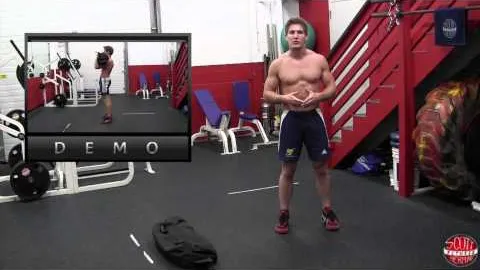


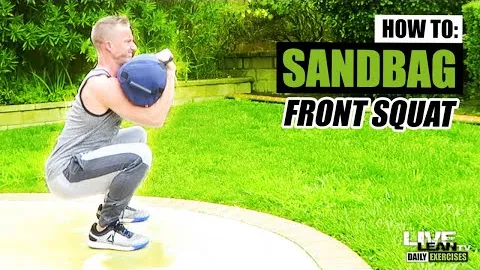
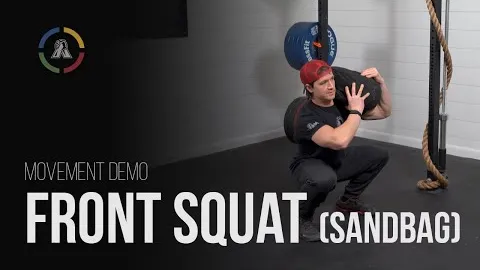
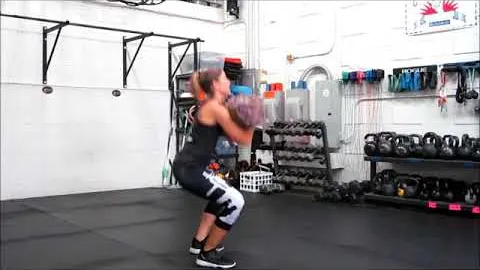
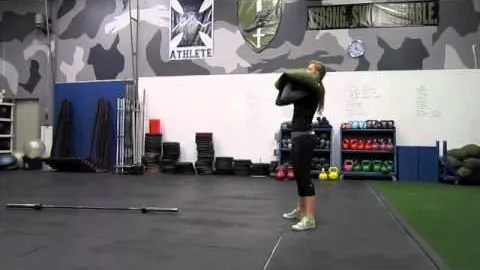
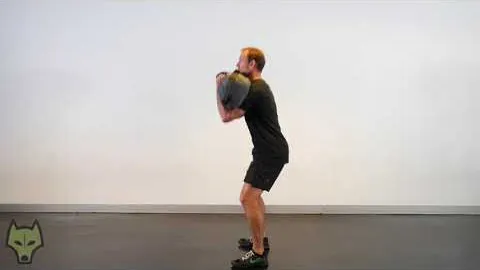

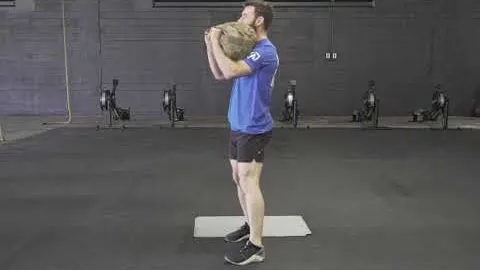
Sandbag training has gained significant popularity in recent years due to its effectiveness in building strength, stability, and overall functional fitness. One particular exercise that stands out in the realm of sandbag training is the Sandbag Front Squat. This exercise targets your legs, glutes, core, and upper body, making it a full-body workout that can yield impressive results. In this article, we will provide you with a comprehensive guide to mastering the Sandbag Front Squat, including step-by-step instructions, benefits, variations, and useful tips.
Prepare the Sandbag: Start by choosing an appropriate sandbag for your fitness level. Fill it with sand, ensuring that it's evenly distributed to maintain stability while performing the exercise. Place the sandbag on the ground in front of you.
Grasp the Sandbag: Stand in an upright position, facing the sandbag. Position your feet shoulder-width apart, toes pointing slightly outward. Bend at the hips and knees, keeping your back straight as you reach down and grasp the sandbag firmly with both hands. Your palms should face upwards, with a grip that is comfortable but secure.
Lift the Sandbag: Engage your core and leg muscles as you begin to lift the sandbag off the ground. Maintain a straight back and lift upwards, using your legs to generate power. As you lift the sandbag, bring it up to your chest, allowing your elbows to come forward and underneath the sandbag. Keep your arms parallel to the ground.
Find Your Stance: Adjust your feet slightly wider than shoulder-width apart, ensuring that they are in a stable position. This will provide a solid foundation for the exercise and allow for greater stability during the movement.
Squat Down: Initiate the squat by bending at the hips and knees, lowering your body toward the ground. Keep your chest up, back straight, and core engaged throughout the movement. Aim to reach a parallel or slightly below parallel position, ensuring that your thighs are parallel to the ground.
Maintain Proper Form: As you squat down, it's important to maintain proper form to maximize the benefits of the exercise. Avoid rounding your back or letting your knees cave inwards. Keep your weight evenly distributed on your feet, with your heels planted firmly on the ground.
Drive Upwards: Push through your heels and engage your leg muscles to drive yourself back up into the starting position. Use the power generated from your legs, glutes, and core to ascend smoothly and in a controlled manner.
Control the Descent: As you return to the starting position, maintain control over the movement. Slowly lower the sandbag back down, keeping your core engaged and your back straight. Avoid dropping the sandbag or collapsing as you reach the bottom of the movement.
Repeat and Progress: Complete the desired number of repetitions for your workout routine. As you become more comfortable and proficient with the Sandbag Front Squat, gradually increase the weight of the sandbag or the number of repetitions to challenge yourself further and continuously progress.
The Sandbag Front Squat offers numerous benefits that make it a valuable addition to any training program. Some of the key advantages of incorporating this exercise into your routine include:
Full-Body Workout: The Sandbag Front Squat engages multiple muscle groups, providing a comprehensive full-body workout. It targets your quadriceps, hamstrings, glutes, core, and upper body muscles, including the shoulders, back, and arms.
Improves Functional Fitness: Functional fitness involves exercises that simulate movements we encounter in daily life. The Sandbag Front Squat mimics movements such as lifting heavy objects, making it highly effective in improving functional strength and stability.
Increased Strength and Muscle Development: This exercise places a significant load on your lower body muscles, helping to build strength and power. The sandbag's instability also activates your stabilizer muscles, contributing to overall muscle development and balance.
Enhanced Core Stability: The Sandbag Front Squat requires a strong core to maintain stability and proper form throughout the movement. By regularly performing this exercise, you can strengthen your core and improve balance and posture.
Minimal Equipment: Sandbags are affordable, portable, and versatile exercise tools. Incorporating the Sandbag Front Squat into your routine requires minimal equipment, making it accessible to individuals of all fitness levels.
While the basic Sandbag Front Squat is highly effective on its own, there are several variations that can add variety and further challenge your muscles:
Overhead Sandbag Squat: Lift the sandbag overhead, with your arms fully extended. Perform the squat while maintaining the sandbag in the overhead position. This variation further engages your core, shoulders, and upper body.
Sandbag Clean and Front Squat: Start with the sandbag on the ground between your legs. Perform a clean movement, bringing the sandbag up to your chest. From here, proceed with the Sandbag Front Squat using the cleaned position. This variation incorporates an additional explosive movement before the squat.
Rear Lunges: Instead of performing a traditional squat, step back into a lunge position after lifting the sandbag. Alternate legs with each repetition to engage different muscles and challenge your stability.
To ensure the best possible execution and maximize the benefits of the Sandbag Front Squat, consider the following tips:
Start with Lighter Weights: If you're new to sandbag training or the Front Squat exercise, begin with a lighter sandbag to familiarize yourself with the movement and perfect your technique. Gradually increase the weight as you become more comfortable and proficient.
Maintain Proper Posture: Keep your chest up, back straight, and core engaged throughout the exercise. This helps maintain proper posture and prevents injury.
Focus on Breathing: Exhale as you drive upwards and inhale as you descend into the squat. Proper breathing helps optimize your strength and stability during the exercise.
Seek Guidance if Needed: If you're uncertain about your form or technique, consider working with a qualified fitness professional. They can provide expert guidance and tailor the exercise specifically to your needs and fitness goals.
The Sandbag Front Squat is a highly effective exercise for developing lower body strength, core stability, and functional fitness. By following the step-by-step instructions outlined in this guide, understanding its benefits, and implementing helpful tips, you can confidently incorporate this exercise into your training routine. Remember to start with lighter weights, focus on maintaining proper form, and gradually progress as you become more comfortable. Embrace the challenge, reap the rewards, and witness the transformation in your overall strength and fitness levels.
If you're looking for a gym, fitness club or yoga studio, you've come to the right place.
You can find information about gyms in your area. Browse catalog of gyms and find gyms with classes which are you looking for.
On gym page you can find simple information like address, phone or website. You can find list of available classes. You can check availability of personal training or small group classes. On place page you can also see information about open hours.
You can find gyms near you with amenities, courts, studios and equipments.
Use our map to find gym at your city or district.
In Gym Navigator you can find list of exercises with movies for many body parts.
You can browse exercises catalog and find exercises the best of you.
You can also find exercises grouped into workout plans, which you can use to improve you body. Each routine show you exercises one by one and give you possibility to count you progress and count down rest time.